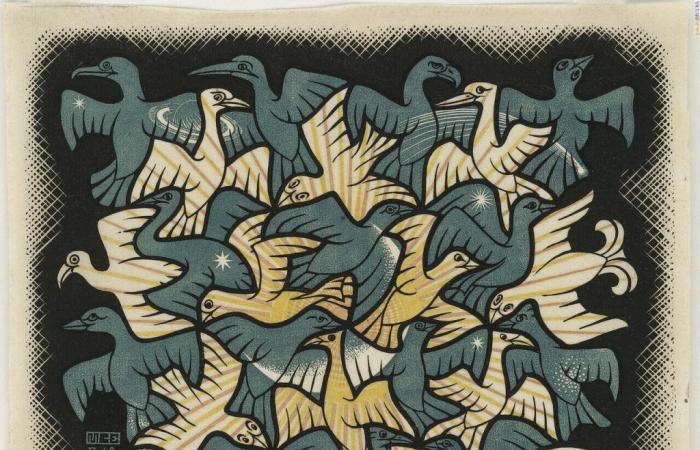The current exhibition named after him is hosted at the famous Palazzo dei Diamanti; it will remain open until July 21st. It is divided into six sections
He is one of the famous artists who also made stamps. A Dutchman who lived from 1898 to 1972, he was in love with Italy, which he visited several times. And it is no coincidence that now the Bel Paese frequently remembers him by setting up exhibitions. The current one is welcomed, until July 21st, at the Palazzo dei Diamanti in Ferrara. It is simply titled “Escher”, intended to celebrate Maurits Cornelis Escher.
The works he signed – it is remembered – have won “the appreciation of millions of visitors thanks to his extraordinary ability to transport them into imaginative and apparently impossible worlds”. They are creations where countless themes and suggestions converge: from geometric theorems to mathematical intuitions, from philosophical reflections to the paradoxes of logic, also influencing the world of design and advertising; they constitute “a challenge to perception and represent a unique example in the panorama of art history of all time”.
Curated by Federico Giudiceandrea and Mark Veldhuysen, the route is divided into six sections. We begin with “The Beginnings”: the early works highlight, in the sinuous and elegant shapes and decorations inspired by natural subjects, tangents with the Art Nouveau and Symbolist environment; he has a deep interest in nature and makes numerous realistic prints of flowers and insects; in the Boot he draws monuments, landscapes, flora and fauna, which upon his return he transforms into graphic works.
He follows “Italy”; having settled permanently in Rome in 1923, he enters the circle of art galleries; at the same time he visits the territory far and wide. The examination of landscapes leads him to concentrate on the geometric structures of panoramas and natural elements.
“Tessellations” tells the story of the Spanish period; the elaborate Moorish-style decorations of the buildings in Granada fascinate him and push him to become interested in ways of dividing the plane with one or more geometric figures repeated endlessly, without overlaps or empty spaces. This will be one of the central themes.
The next step can be dated from 1937 and is documented in “Metamorphosis”. It is the transformation, in particular of a being or an object into another of a different nature, generated by the modification and subsequent concatenation of different tessellations. A reference is in the Netherlands 80 cent value paper issued on 7 July 1998.
With “Structure of Space” we document the period in which, from the mid-1930s, he progressively abandoned Euclidean representation. The growing interest he has in mathematics and geometry passes through his in-depth study and fascination with spheres, geometric solids, reflective or topological surfaces.
Finally, here is “Geometric Paradoxes”. The architecture and geometric compositions present perspective distortions which, at first glance, seem perfectly plausible but which, upon closer inspection, prove impossible.



